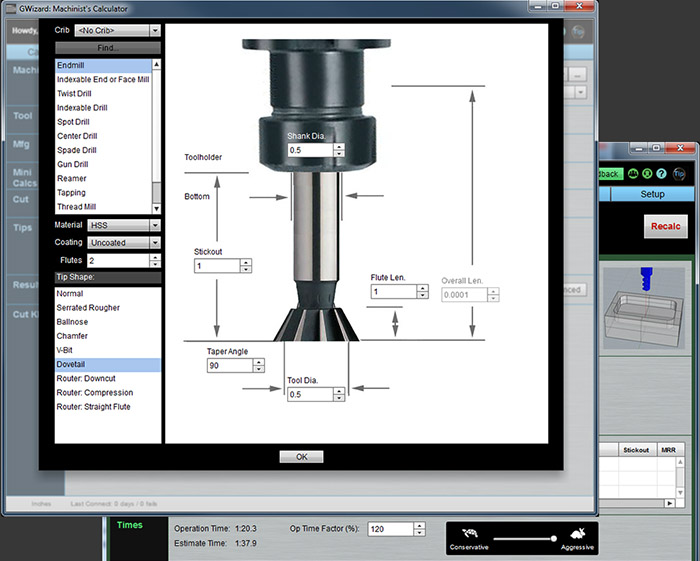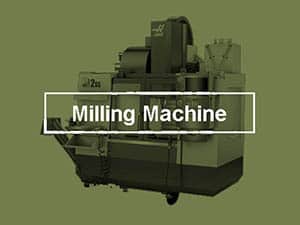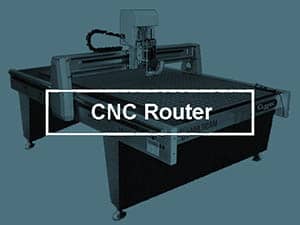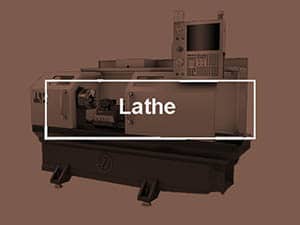Awesome! You've found not one but two Free Lathe Speeds and Feeds Calculators on this page. Either may be used to calculate turning feeds and speeds. So use one to determine the spindle speed (RPM) and feed rate (IPM) for a turning operation.
In some turning operations, the diameter of the workpiece will change so the spindle speed rpm and cutting speed (SFM) must change as well.
We offer both a free lathe feeds and speeds calculator using simple shop formulas, and also a free (for a limited time) full-featured calculator that is the industry leading lathe speeds and feeds calculator. It’s used daily by thousands of the world’s best manufacturers.

They know what they’re doing and wouldn’t waste time or money if the software didn’t work.
The thing is, why use the simple turning speeds and feeds calculator lathe when you could grab our full-featured G-Wizard Lathe Feeds and Speeds Calculator completely free for 30 days?
It takes just 37 seconds to download and start using G-Wizard. It costs you nothing and you can get great feeds and speeds from it for the next 30 days. If you want to go back to our free online calculator after that, no worries.
You may as well drive the high-performance model as long as it’s free, right?
Click on the Version of G-Wizard Best Suited to Your Needs:
Or, just use our simple online lathe feeds and speeds calculator below. It covers OD Turning and ID Boring turning operations.
Lathe Speed and Feeds Calculator
Lathe RPM Calculator
Part Cut Diameter
>
inches
Surface Speed:
SFM (see table below for SFM values). To learn what is SFM and how to go from SFM to RPM, click this link.
Note: If you're using CSS, don't forget to set a maximum speed for your spindle. Spindle speeds can get pretty crazy if you are cutting at a small workpiece diameter.
Spindle Speed:
>
RPM
Spindle Speed RPM Formula = (12 * SurfaceSpeed) / (PI * Cut Diameter) (Formula for finding turning speeds)
Lathe Feed Rate Calculator
Spindle Speed:
>
RPM
Feed/Revolution (Chip Load):
>
IPT (inches / revolution)
Feed Rate:
IPM (inches / minute)
Feed Rate Formula = Chip Load * RPM
Note: The Surface Speed and Chip Load tables below assume the tool material is carbide. If your tool material is High Speed Steel (HSS), you can look up the values on the Internet or just use G-Wizard which has them built in.
Turning Surface Speeds for Carbide Insert Tooling
Workpiece Material
Surface Speed (SFM)
Aluminum - Wrought (6061)
1800
Brass
1200
Cast Iron - Ductile
645
Cast Iron - Gray
650
Copper Alloy - Wrought
1200
Magnesium Alloy
1650
Stainless Steel
400
Steel - Mild
800
Steel - Hard Alloy
400
Steel - Tool
400
Titanium
200
Need a Material Not Listed? We Can Help!
Need a Material Not Listed? We Can Help!
Turning Chip Loads for Carbide Inserts
Workpiece Material
Chip Load (IPT)
Aluminum - Wrought (6061)
0.010 - 0.018
Brass
0.005 - 0.010
Cast Iron - Ductile
0.008 - 0.012
Cast Iron - Gray
0.008 - 0.015
Copper Alloy - Wrought
0.004 - 0.01
Magnesium Alloy
0.010 - 0.018
Stainless Steel
0.008 - 0.014
Steel - Mild
0.010 - 0.014
Steel - Hard Alloy
0.008 - 0.012
Steel - Tool
0.002 - 0.010
Titanium
0.002 - 0.006
CNC Feeds and Speeds Chart Wood
Not Sure the Correct Value for Your Cutter? We Can Help!
Hang on: You Deserve Better!
Software that makes anyone a better CNC'er... Even beginners:
Better Tool Life, Surface Finish, and MRR with G-Wizard

It took years, we analyzed data from over 250 tooling catalogs,
we built a powerful cutting physics engine with advanced algorithms
that considers almost 60 different variables,
and we worked with over 50,000 CNC'ers
like yourself to make sure you'd have
Improve My Feeds and Speeds For


FAQs
How to Calculate Material Remove Rate for Turning?
Generally, you want to find the highest Material Removal Rate that will keep a reasonable tool life. Our G-WIzard Calculator automates much of that process. But, if you are using the free calculator above, you may want to click through to this article to find the Material Removal Rate Formula.
How to Calculate Feed Rate for Turning?
Wondering how to calculate the feed rate for turning? Perhaps so you can create your own spreadsheet?
Feed Calculations for feed rates for turning are simple, but getting real-world feeds and speeds is quite a bit harder. We give you all the basic formulas in our free online Feeds and Speeds Course to figure out speed and feed for your turning operation. As a matter of fact, there is information for most machining operations.
What RPM should you mill steel?
Multiple factors can affect the spindle speed (RPM) when milling steel. These include:
The type of steel:
- Overall hardness
- Heat treatment
- Alloying composition
THe type of tooling:
- Material (HSS, carbide, etc.)
- Operation: Turning, Parting Off, etc.
Other Factors:
- Use of coolant.
Most specialty steel manufacturers will make available machining information if it is not a common steel variant. Just lookup the surface speed and use the standard formula to convert surface speed to spindle speed (rpms). Or, you can figure the spindle speed from the surface speed using the free calculator above.
How do you calculate rpm for a lathe?
The Spindle Speed RPM formula is:
Spindle Speed RPM = (12 * Surface Speed) / (PI * Cut Diameter)
Surface Speed will be something you look up (see the table above), and Cut Diameter is the diameter of the material you're cutting. That's all you need to calculate Spindle Speed.
What RPM should I use on my metal lathe?
RPM is essentially the spindle speed for the lathe. Use the formula above under "How do you calculate rpm for a lathe?" to figure out the best RPM or spindle speed
What is the formula for the feed rate of a lathe?
The feed rate can be calculated by this formula:
Feed Rate Formula = Chip Load * RPM
The chip load is based on the material and can be looked up in a table such as the chip load table above.
That simple formula will give you the appropriate feed rate to run your lathe.
Where can I find a free titanium turning speeds and feeds calculator?
Right here!
Both G-Wizard and our free online turning speeds and feeds calculator above have Titanium listed in their workpiece material lists.
More Feeds and Speeds Calculators
-
G-Wizard Feeds and Speeds Calculator
-
Milling Speeds and Feeds Calculator
-
CNC Feed Rate Calculator
-
Chip Load Calculator
-
Simple Feeds and Speeds Calculator
-
Lathe Feeds and Speeds Calculator
-
Drill Feeds and Speeds Calculator
-
Tapping Feeds and Speeds Calculator
-
Master Feeds and Speeds Calculator List
Be the first to know about updates at CNC Cookbook
Join our newsletter to get updates on what's next at CNC Cookbook.







